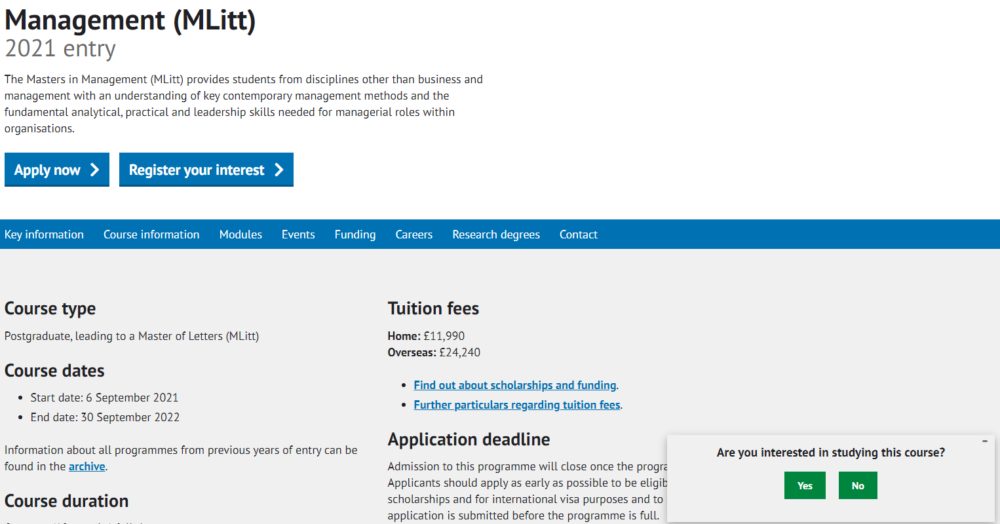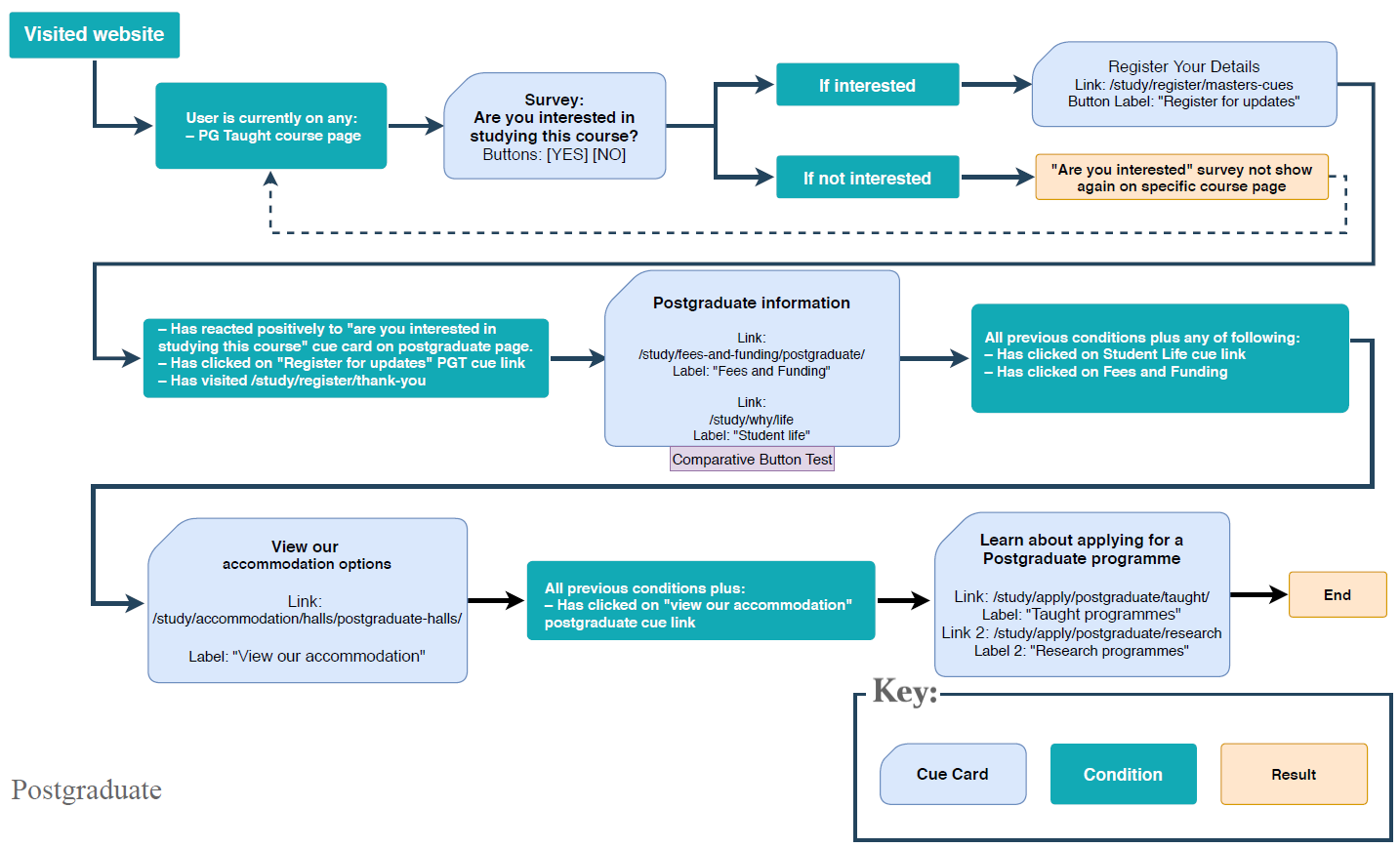Using cues.ai to inform decision making
We have been using software called cues.ai from a company called Twenty Thousand Leagues, since April this year. When students view a course page, the software prompts students with a question ‘are you interested in studying this course’. Depending on the response to the question, the system will direct users to other web pages that help them on their journey towards making a decision. The aim is to ensure we are providing “the right content, at the right time, to the right people”. Has the software made any difference?
Postgraduate taught and undergraduate international courses
We looked at two particular areas, postgraduate taught and undergraduate international courses. Twenty Thousand Leagues helped define the workflow that user would take and where the cues would appear. The following diagram shows the logic for visitors to any postgraduate taught page.
Deployment
Twenty Thousand Leagues programmed the cues.ai software and deployed JavaScript code onto web pages via Google Tag Manager. A prompt appears on the page after the visitor has been on the page for over 60 seconds and whether it thinks the user is engaged by how they are scrolling and interacting with the page elements.
Example prompt
The following screenshot shows a cue appearing on the Management MLitt course page. It asks ‘are you interested in studying this course?’.

If the user clicks on yes, the prompt changes to Register your interest – sign up now to receive information about this programme. If the user were to click on no the prompt would not appear again.
Clicking on register for updates will then take a user to the registration form:
Results
We found cues.ai helped to inform the interactions we were having with students. A few things we found…
- Over three-quarters of students engaged with the cues and ended up progressing to completing forms registering their details.
- On average, students looked at over 80% more pages when they’d engaged with cues.
- Students spent over four minutes longer on average when they visited the site and the bounce rate was dramatically reduced.
- Regular reports gave us lots of data to inform our approach.
What next?
The cues.ai software has revealed that students respond positively to prompts that nudges them towards further content that will help them make a decision. The results have encouraged us to investigate whether the tool can help visitors to other areas of the website. This is something we want to pursue over the coming months.


